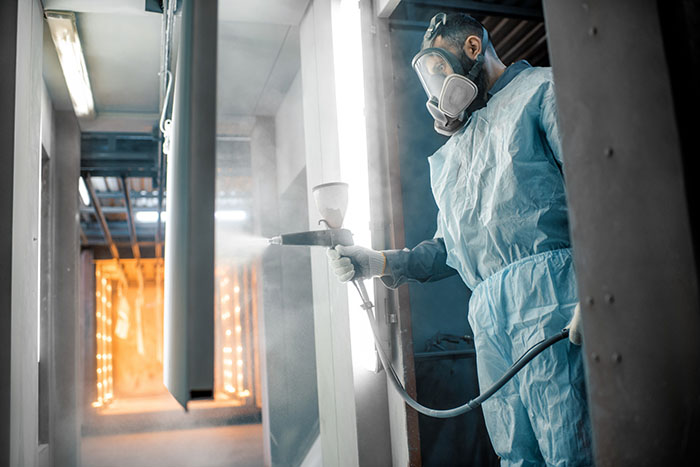Due to their complex nature, it can be easy to misconstrue exactly what conventional disinfectant sprayers are, and whether or not they are worth the use.
Typically, the most common concerns among buyers revolve around understanding sprayer types, as well as the amount of disinfectant to use during the application, how to use a conventional disinfectant sprayer, viable alternatives, and etc.
Awareness of the potential of sprayers or foggers for sanitizing and disinfecting their environment, whether for residential, commercial, or industrial purposes has been on the rise over the past few years. Consequently, widespread understanding of conventional disinfectant sprayers, including their associated benefits, maintenance structure, how to use them, buying guide, and etc. has seen continued growth.
Our goal at Bolair is to help you find the best possible conventional disinfectant sprayer to help meet your disinfection and sanitization needs.
Everything You Need to Know About Conventional Disinfectant Sprayers
First, what are conventional disinfectant sprayers, and are they different from conventional paint sprayers?
Conventional disinfectant sprayers offer a fast and more efficient way to consistently spread disinfectant materials across a surface under the spray. In other words, these sprayers are used to deliver maximum productivity and efficiency when disinfecting surfaces.
However, while conventional disinfectant sprayers can help improve the disinfecting process, their productivity and effectiveness significantly depend on the spraying techniques you apply. In essence, it’s one thing to understand what a conventional disinfectant sprayer is, and it is another to know how to use it to drive premium results.
Before learning how to use a conventional electrostatic disinfectant sprayer, you should first familiarize yourself with its basic component to aid better understanding. Below are the major components of an electrostatic sprayer for disinfectants:
- Pump: The pump delivers a steady stream of high-pressure fluid via the hose to the device’s spray gun.
- Spray Tip: for controlling the flow rate of disinfectants during application. The speed and pattern of the spray depend on the size and shape of the orifice.
- Pressure Control: This helps the sprayer regulate the pressure of fluid the pump delivers.
- Motor and Drive System: This is a heavy-duty system used for driving the sprayer pump.
- Gun: This Gun delivers the fluid to the surface under the spray. It serves as the off/on the valve of the device.
How to Use Your Conventional Disinfectant Sprayers
Having familiarized yourself with the key components of a conventional sprayer, the next is to understand the step-by-step procedures required for its operation. The information conveyed in this section contains the general application guidelines for a typical conventional disinfectant sprayer.
First, understand that before you start spraying, regardless of the type of conventional sprayer you’ve chosen to use, you must always refer to the application recommendations by the chemical manufacturer to ensure you are doing the right thing.
- Pressure Adjustment: It’s ideal to start from the lowest to the highest pressure to achieve the best spray pattern. A good spray pattern will have soft and even edges, an effect achievable by adjusting the pressure until desired results are gotten.
- Choose The Right Tip Size: The tip size of your conventional sprayer primarily determines the amount of disinfectant that should be sprayed during application. It’s ideal to use low-pressure tips to help you control the spray better.
- Triggering Technique: Trigger and release the gin at the start and end of each stroke. Also, start and stop the gun during passes. This technique eliminated blotches of disinfectant materials at the start and end of your strokes.
- Moving The Spray Gun: Moving the spray gun correctly aids in blending. When moving, ensure the gun and the surface under spray are perpendicular. Avoid fanning the gun as it may cause uneven spray patterns and distribution of the disinfectant.
Understanding The Pros and Cons
Are you wondering if the conventional disinfectant sprayer is worth the hype? In this case, it is best to become familiar with a comprehensive analysis of the advantages and disadvantages of the conventional sprayer, helping you make a better-informed decision.
Pros of Conventional Sprayers
Below are the advantages or benefits associated with using the best conventional sprayer:
- The opportunity to choose from several models, depending on weight, capacity, pressure level, etc.
- The best conventional sprayers offer absolute control.
- Conventional sprayers are typically fast: they are one of the fastest sanitization methods available, saving users valuable time. However, the level of speed primarily depends on the rate and volume of spray.
- Conventional sprayers support contactless applications. In essence, the sprayer doesn’t need to come in contact with the contaminated surface under spray before registering its effect.
- They are generally user-friendly and easy to use.
Cons of Conventional Sprayers
- Electrostatic conventional sprayers typically require a higher initial investment. However, the long-term cost is often worth it.
- Runoff is prevalent when applying conventional sprayers. However, this is often seen when using traditional sprayers. Electrostatic sprayers produce fewer runoffs.
FAQ
What Is the Best Sprayer for Disinfectant?
Conventional sprayers are arguably the best sprayers usable for disinfecting surfaces, especially when the surface is large. Generally, conventional disinfectant sprayers offer more effective and efficient results than the traditional spray-and-wipe methods and other types of sprayers.
Conventional sprayers work by coating surfaces entirely for a certain period to ensure the total elimination of all infections.
However, while conventional sprayers may be regarded as the best sprayer for disinfectants, the type of disinfectant you use is also an important factor to consider. Therefore, before choosing any conventional sprayer, you should consider elements such as your budget, the reviews of such sprayer, the pressure level, available orifice sizes, power, etc.
For the best conventional sprayer to help get your job completed effectively and quickly, consider checking out the catalogue of products at Bolair.
What Is a Conventional Disinfectant Sprayer?
Conventional sprayers function by atomizing and breaking liquid disinfectants into smaller droplets without using compressed air. Conventional disinfectant sprayers have been designed and manufactured to ensure compatibility with several disinfectants and chemicals. These liquids are applied under high pressure from a gun through the tip (also called the nozzle). The size of the sprayer’s tip determines the liquid’s flow rater and spray pattern.
In conventional sprays, viscosity and surface tension are overcome by the energy provided by the highly-pressurized liquid stream, consequently forming a fine spray across the surface that’s being disinfected.
What Is the Difference Between an Electrostatic Sprayer and a Fogger?
Technically, the major difference between an electrostatic sprayer and a fogger is the level of efficiency offered when disinfecting a surface. An electrostatic conventional disinfectant spray is inarguably a more efficient and effective disinfecting method than fogging. Within five to ten minutes, you can be sure of eliminating up to 99.99% of infections on the surface you’re disinfecting.
However, foggers are more ideal when there’s a need to penetrate smaller and harder-to-reach areas. Apart from this, electrostatic sprayers are the most preferred choice, especially for hard and non-porous surfaces.
If you want wider coverage plus maximum effectiveness, you should consider using an electrostatic conventional disinfectant sprayer over a fogger. Do not hesitate to check out the available conventional sprayers at Bolair for the best option that suits your needs.







